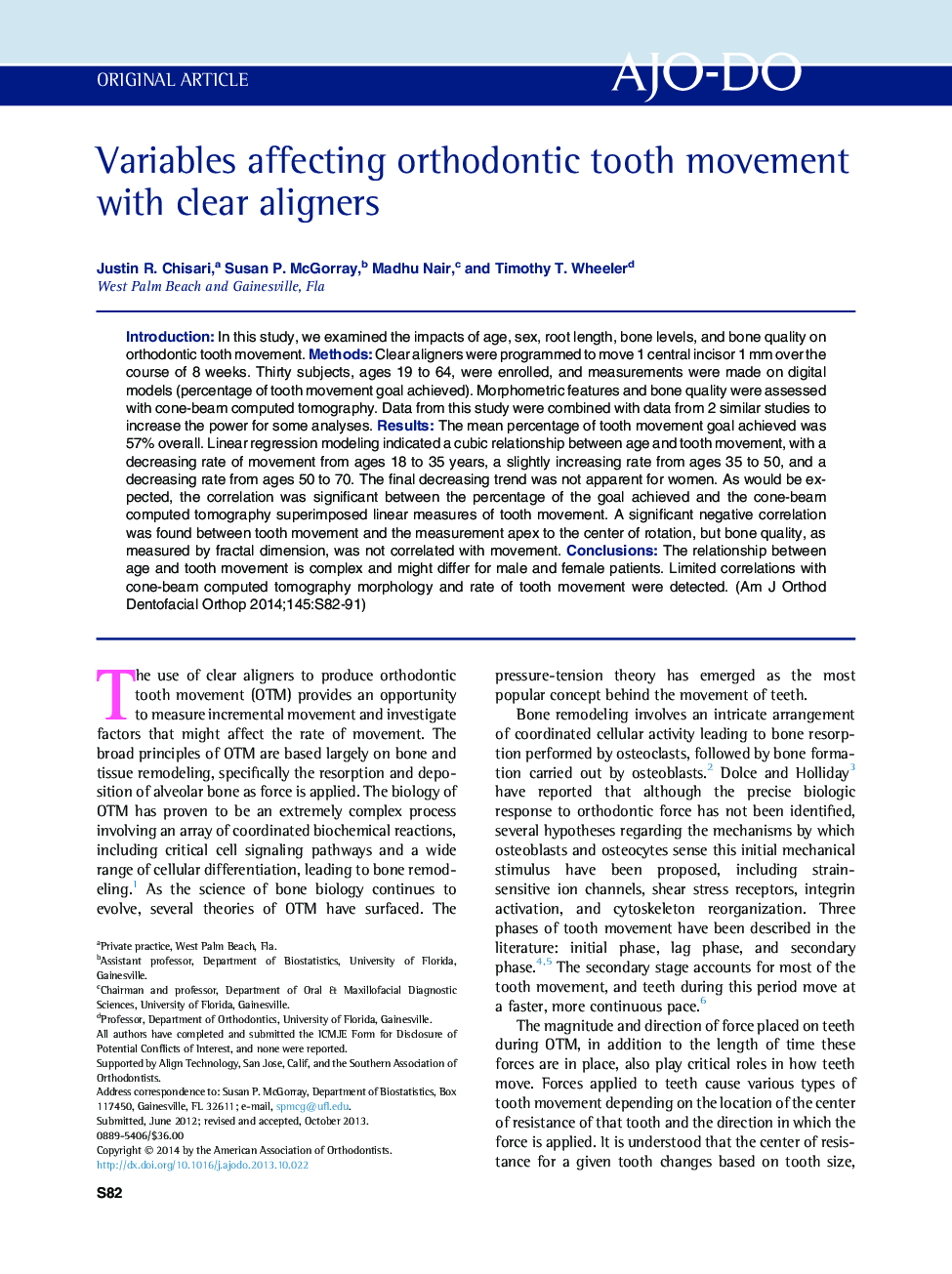| Article ID | Journal | Published Year | Pages | File Type |
|---|---|---|---|---|
| 3115920 | American Journal of Orthodontics and Dentofacial Orthopedics | 2014 | 10 Pages |
IntroductionIn this study, we examined the impacts of age, sex, root length, bone levels, and bone quality on orthodontic tooth movement.MethodsClear aligners were programmed to move 1 central incisor 1 mm over the course of 8 weeks. Thirty subjects, ages 19 to 64, were enrolled, and measurements were made on digital models (percentage of tooth movement goal achieved). Morphometric features and bone quality were assessed with cone-beam computed tomography. Data from this study were combined with data from 2 similar studies to increase the power for some analyses.ResultsThe mean percentage of tooth movement goal achieved was 57% overall. Linear regression modeling indicated a cubic relationship between age and tooth movement, with a decreasing rate of movement from ages 18 to 35 years, a slightly increasing rate from ages 35 to 50, and a decreasing rate from ages 50 to 70. The final decreasing trend was not apparent for women. As would be expected, the correlation was significant between the percentage of the goal achieved and the cone-beam computed tomography superimposed linear measures of tooth movement. A significant negative correlation was found between tooth movement and the measurement apex to the center of rotation, but bone quality, as measured by fractal dimension, was not correlated with movement.ConclusionsThe relationship between age and tooth movement is complex and might differ for male and female patients. Limited correlations with cone-beam computed tomography morphology and rate of tooth movement were detected.
